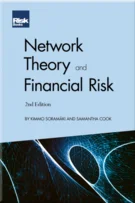Portfolio Management and Second-order Greeks
Foreword
Introduction
A Brief History of the FX Market’s Evolution
Foreign Exchange Markets
Predicting FX Movement
Basic FX Instruments
Trading Floor Dynamics
FX Options: An Intuitive Approach
Famous Formulas, Fame and Fortune
Getting to the Formula and the Correct Probability Distribution
The Greeks – A Practical Approach
Portfolio Management and Second-order Greeks
FX Options Trading Book & Risk Measurement
Hedging FX Risk at Corporations
You Have Options
Situations Gone Mad, From the Most Complex to the Simplest
Speculators and Hedge Funds: How Do Portfolio Managers Make Money?
Speculating and Hedging: The Fundamental Differences
Epilogue
The previous chapter armed us with powerful tools that enable us to peer into the heart of option valuation and option risk management. These tools can be complex in their own right, but they get very challenging with the awareness that to get anywhere you need to consider all of them at once. However, there is one key characteristic that allows us to breathe easier – the results of each analytical tool can simply be added across many options. As we saw in Exercise 9.1, this allowed us to engineer portfolios that react a certain way to market conditions. That is powerful! In this chapter, we will take the closing realisations from the previous chapter and build on them. We will begin by examining the greeks and issues of a particular combination of options, called the “risk reversal”. As a consequence of that analysis, we will examine the market conventions around the risk reversal, and its impact in a portfolio setting. As we’ve done before, as the chapter progresses we will ratchet up the complexity to include other tools that are helpful in portfolio management.
OPTION PORTFOLIO MANAGEMENT: THE THEORY AND THE REALITY
Recall the situation we introduced back in Chapter 8
Copyright Infopro Digital Limited. All rights reserved.
As outlined in our terms and conditions, https://www.infopro-digital.com/terms-and-conditions/subscriptions/ (point 2.4), printing is limited to a single copy.
If you would like to purchase additional rights please email info@risk.net
Copyright Infopro Digital Limited. All rights reserved.
You may share this content using our article tools. As outlined in our terms and conditions, https://www.infopro-digital.com/terms-and-conditions/subscriptions/ (clause 2.4), an Authorised User may only make one copy of the materials for their own personal use. You must also comply with the restrictions in clause 2.5.
If you would like to purchase additional rights please email info@risk.net






